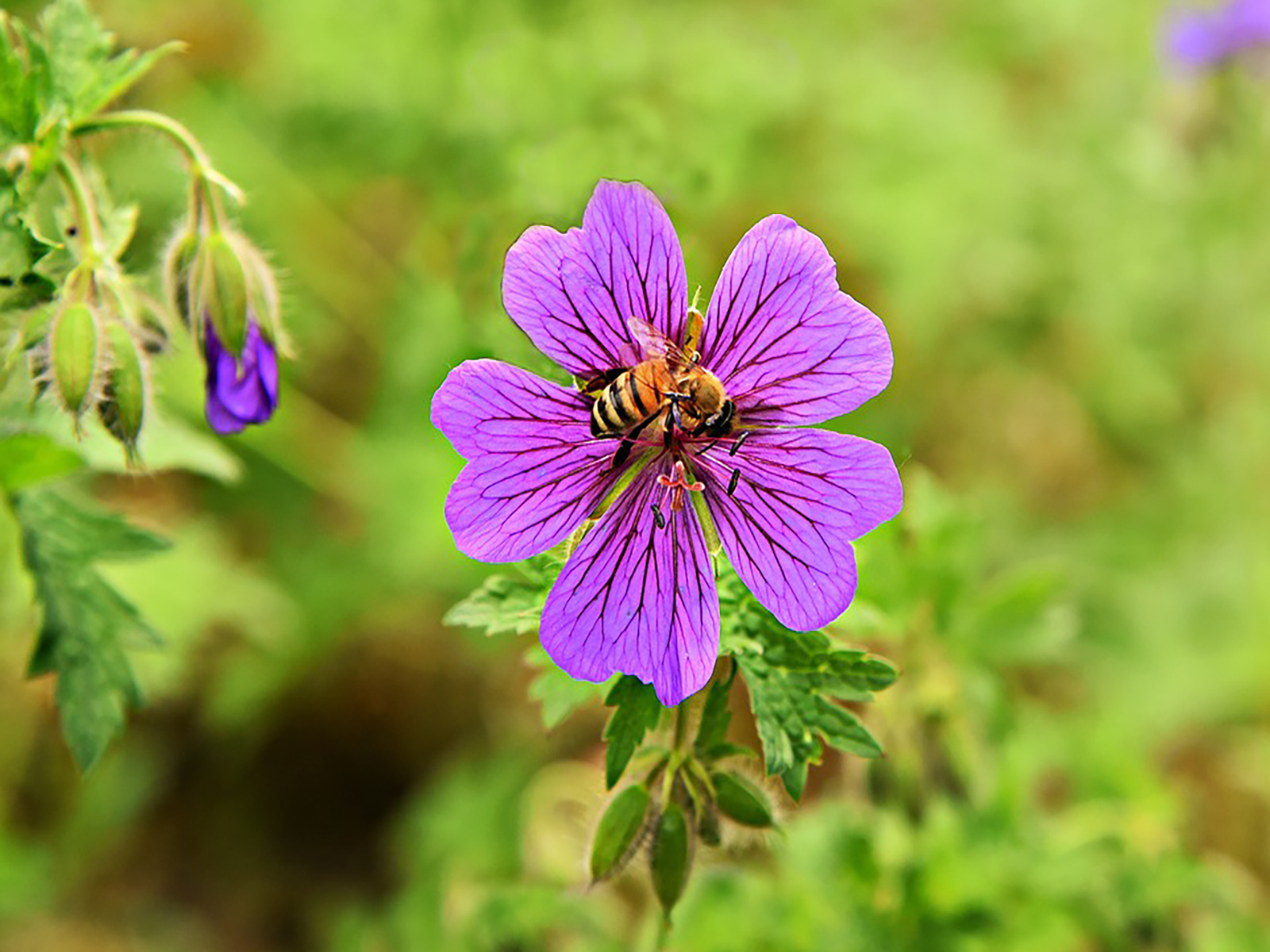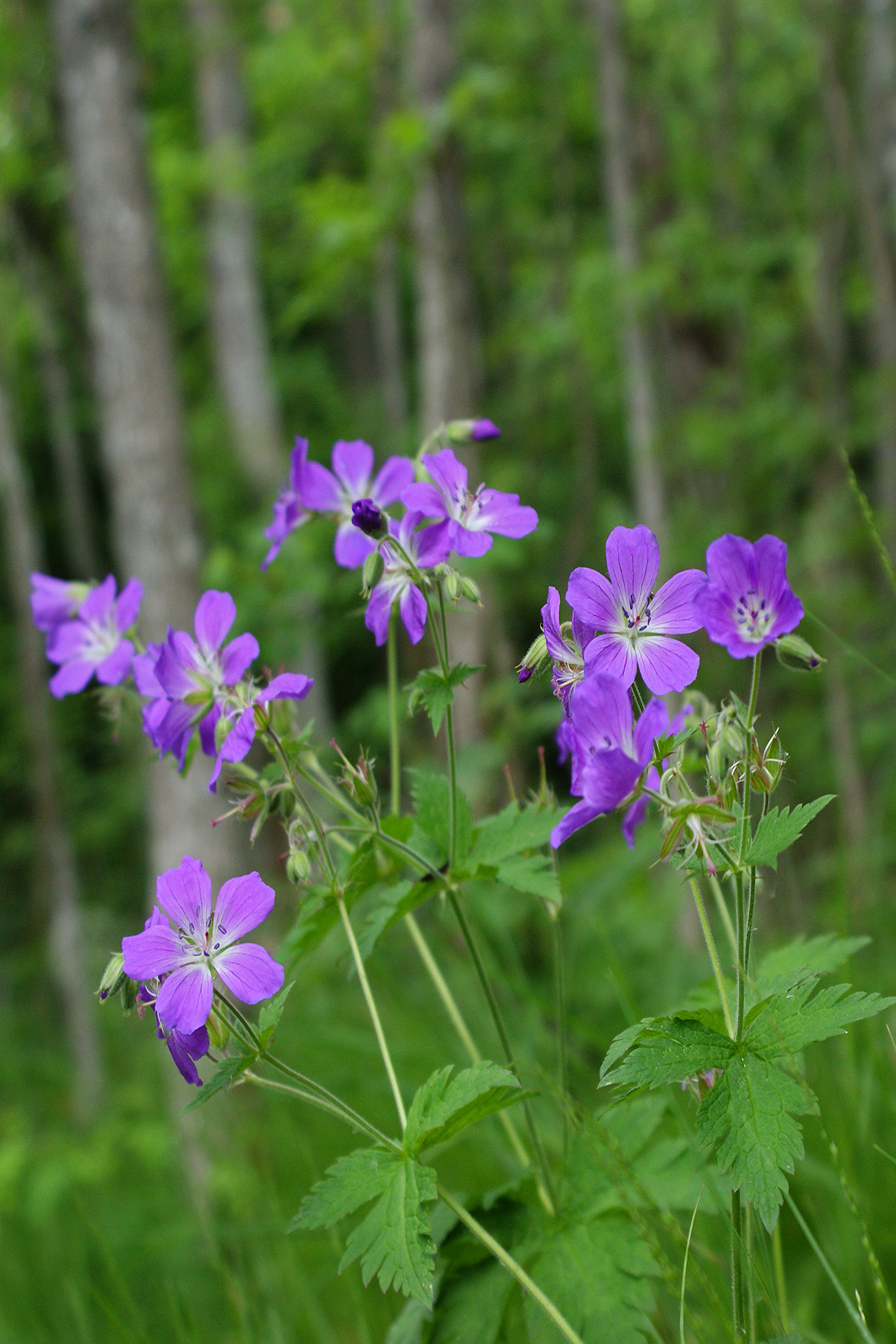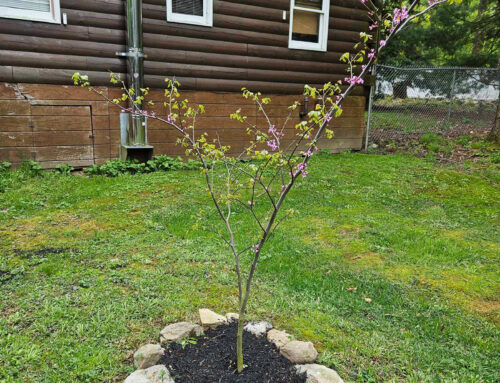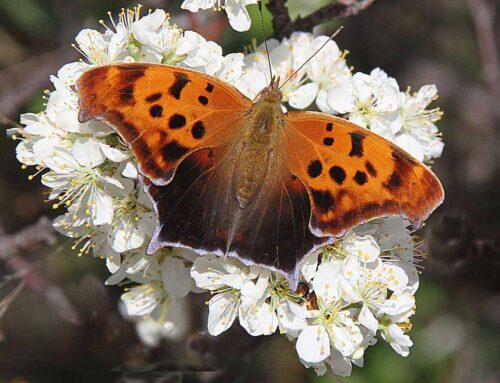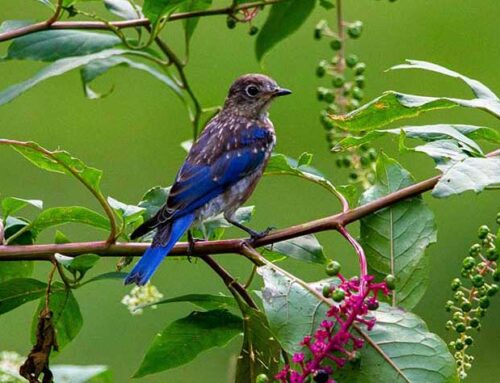Sustainable Landscaping with Native Plants
Cranesbill, or commonly known as geranium are a perfect choice for someone looking to add a touch of color to the garden this year. With a diverse selection within it’s genus, it is a great choice for a native plant to provide an array of colors while attracting a diverse selection of wildlife at the same time.
Varieties range in their uses, and with over 400 species resistant to pests, geranium are a perfect plant for a novice gardener looking for an easy to handle, hardy flower that spread easily. Utilizing many low growing, carpet like plants like geranium in your garden is a cost efficient way to fill in areas while also vastly improving the appearance of the area. At the same time, cranesbills make for very fragrant flowers that have no trouble attracting and feeding plenty of welcome garden guests, like butterflies and bees.
Common Varieties
“When the flower blossoms, the bee will come.”
– Botanical Name: Geranium
– Common Names: Cranesbills, Geraniums
– Type of Plant: Hardy perennial
– Plant Family: Geraniaceae
– Native Areas: Eastern North America, South-Eastern Canada
– USDA Zones: 3 to 9
– Height: .5 ft to 2 ft
– Width: 2 ft to 4 ft
– Blooms: Blue, purple, pink, or white
– Soil: Chalky, clay, loam, or sand
– Sun: All
– pH Levels: 5.8 to 6.3
Growing Cranesbill or Geraniums at Home
Fertilizer
Geraniums growing both indoors and outdoors will benefit from adding fertilizer. Slow release fertilizer is the best for outdoor plants, it prevents rain from washing out the nitrogen. For outdoor plants, use a 10-10-10 dry fertilizer, and for indoor plants utilize a 20-20-20 liquid fertilizer. The directions for your fertilizer may vary, so make sure not to over fertilize.
Pests
Your geranium may fall prey to some of it’s many pests, but with proper care you can easily prevent or remove most problems before the problem worsens. Ladybugs are a great counter-measure for aphids, and can be a great addition to your garden overall. Slugs can also be a common pest, but can be dealt with in many ways, from egg-shells to just adding wood chips to your beds.
Propagating
Geranium should be divided about every 3 to 4 years, and this will help keep them surviving even longer. However, if you’d like to fill in more areas in your garden, you can divide plants often. You should divide whenever spring comes around, but you can wait until as late as June if you have to. Simply dig up your geraniums, and seperate them with a knife, being very careful not to damage the root structure. Then replant the divided plants at the same height you dug them up, and provide them with a lot of water.
Pruning
Very little maintenance is required overall once your geraniums have grown, however you should deadhead plants after they bloom. You can remove deadheads by hand which may get tedious, so you can also just shear deadheads back to basal growth, as well as trimming back any longer stems to keep them at a similar height, which will improve the appearance overall.
Sunlight

For the most part, each variety of geranium need similar amounts of sunlight, and should be kept either in full-sun or partial shade. They should not be kept in damp conditions if in shade, as this can lead to mildew. They also should not be left to dry out if kept in full-sun. The varieties differ in their blooming periods however, some geraniums only bloom one time, while others will constantly be blooming throughout the entire growing season. While you can keep geraniums in the full-shade, these will not bloom nearly as much as geraniums kept in the sun/partial shade.
Soil
While not completely necessary, as geraniums are quite hardy plants, they do prefer soil that is slightly acidic, around the 5.8 to 6.3 mark. Loamy, sandy, or chalky soils will provide the best results and provide the best soil ecosystem for geraniums to thrive in.
Temperature
Geraniums will fare best in areas where the daytime temperatures reach 65 to 75 F and nighttime temperatures reach between 50 to 60 F. If you live in areas with cold winters, you should plant geraniums in pots that can be transferred inside overwinter.
Watering
As most flowers are, geraniums are low maintenance and only will need water when the soil starts to dry out. This will occur more often when kept in full sun, and you should be careful to water all geraniums at the soil, avoiding getting water on the leaves. Water can cause your plants to become susceptible to disease and rot.
At Lincoln Landscaping cultivating the environment is our life and livelihood. It is our number one goal to help our clients create and maintain beautiful landscapes while reducing the impact on the environment. Whether you are interested in a pollinator landscape garden design and build or other landscaping or property management project; we can create for you an environmentally friendly, organic and beautiful property. Geranium are a perfect choice for those looking to revitalize an old lawn, and bring in plenty of new pollinators that can help do so. Gardening is a cost effective, beautiful, and natural way to improve any home or business. Contact us here to get started!
Lincoln Landscaping of Franklin Lakes offers complete
organic landscaping, lawn care, turf and property management services.
Lincoln Landscaping “The Natural Choice”
Mike Kolenut President & CEO
https://lincolnlandscapinginc.com
(201) 848-9699

